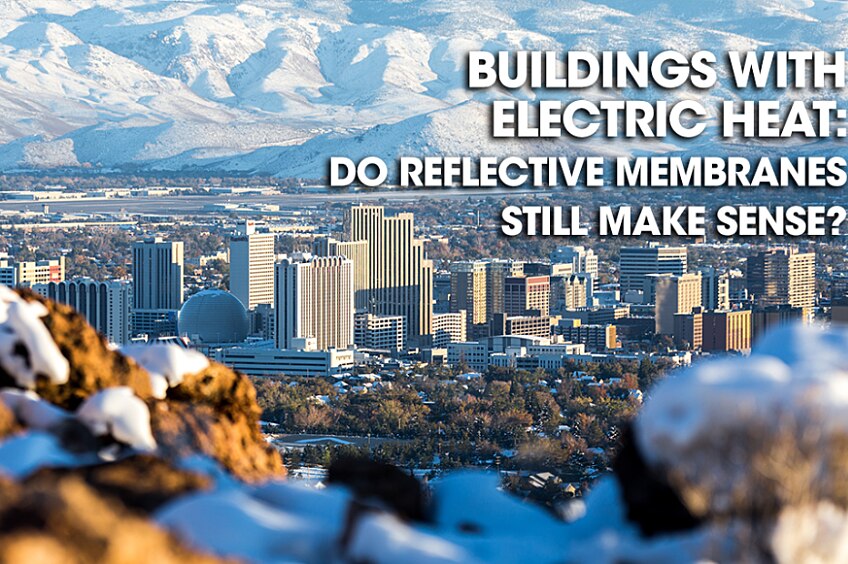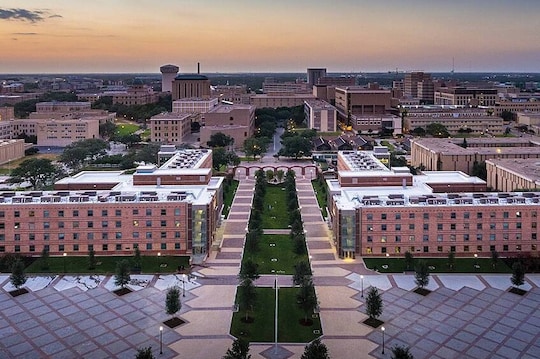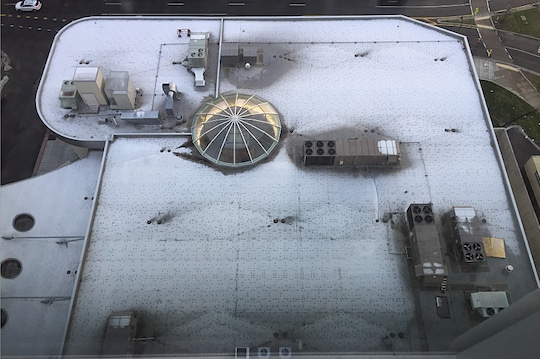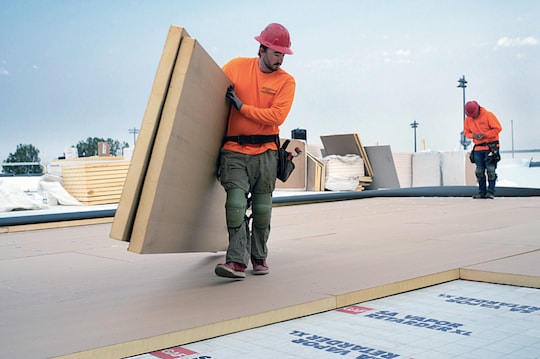
A Case Study Shows the Minimal Impact of the Winter Sun
There has been a school of thought that dark roofs help heat buildings located in the north during winter. Articles claiming this to be the case have always been based on the use of electric heat. Gas heat is less expensive and in previous studies we have shown that reflective roofs (aka cool roofs) are more energy efficient throughout the US, even in cities such as Minnesota, MN and Fargo, ND! Here, a case study approach is used to examine the impact of dark versus reflective membranes, and gas versus electric heat. Different levels of demand charges were included. Cities ranged from Chicago, in the north, Orlando in the south, Portland in the west, and Charleston in the east. The results are surprising – demand charges for electricity use are the largest determining factor by far. Without taking into account demand charges, building owners could be losing out on energy efficient roofing choices.
Introduction
Today, highly reflective membranes, aka "cool-roofs", might be accepted as a logical means of lowering energy costs in warm and sunny climates for those buildings with air conditioning. Examples include thermoplastic polyolefin, TPO, and polyvinyl chloride, PVC.
- Reflective roofs stay cool and reduce the amount of solar heat transmitted down into a building.
- Electric air conditioning is about four times as expensive as gas heating, per unit of energy. So, reducing air conditioning costs is key to improving a building's energy efficiency.
However, some studies have claimed there's a heating penalty associated with using reflective membranes in the north. Many of these studies have assumed commercial buildings are heated with electricity or haven't disclosed the heating energy source at all.
Some industry members have simply divided the US into two zones, recommending reflective membranes for one region and absorptive membranes for the other.
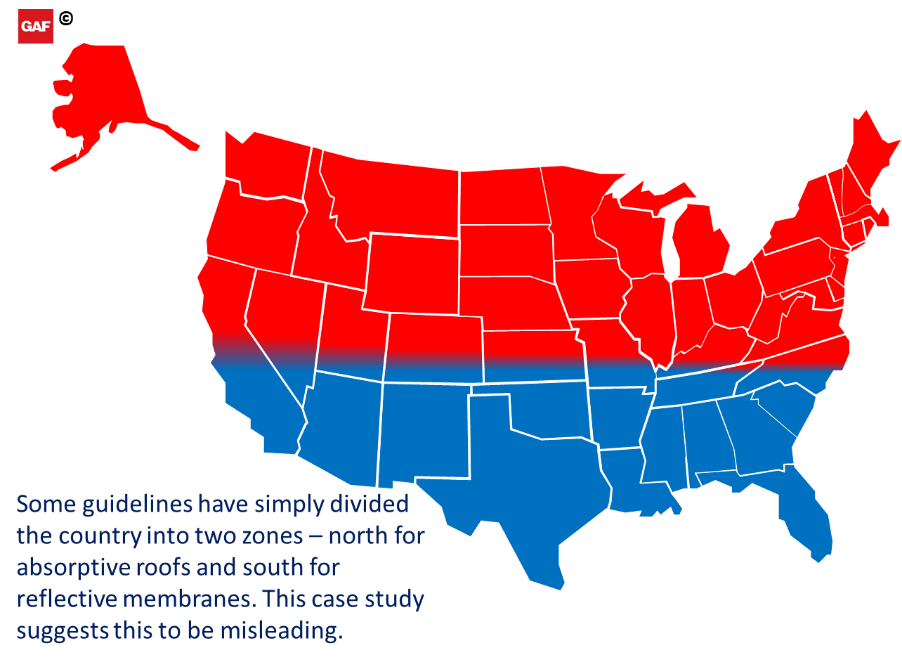
In this article, a case study approach is used to compare energy costs/savings with reflective roofs versus dark absorptive roofs when using electric versus gas heat. Not only is electricity four times more expensive than gas on a unit of energy basis, but electric tariffs can include demand charges. A majority of commercial buildings have demand charges as part of their electric bill, these representing up to 50% of the total electric charge.
Case Study
Description of Building – The building used for this study was single story big-box type, less than 35 feet in height, with a roof area of 125,000 ft2 in a rectangular configuration of approximately 290 × 431 ft. The roof was assumed to be a new installation, i.e., new construction or a total roof replacement.
Roof Assembly – The membrane to be evaluated was assumed to be TPO, with three-year aged reflectance of 68 and emittance of 83, these representing long-term roof performance. This was compared with an absorptive membrane, i.e. EPDM. Reflectivity and emissivity data for most membranes can be found in the Cool Roof Rating Council's directory.
An insulation thermal resistance of R-30 was used because this value is representative for most US locations per the 2015 International Energy Conservation Code. Therefore, results and conclusions of this study would be applicable to new construction and reroofing of existing buildings.
Building Location and Energy Costs – It's generally recognized that reflective roofs are appropriate for southern locations where air conditioning dominates. For this case study, five northern cities were considered. These and the associated energy costs for gas and electricity are shown below. The gas and electric costs for commercial customers were obtained from the US Energy Information Administration and averaged over 2017:
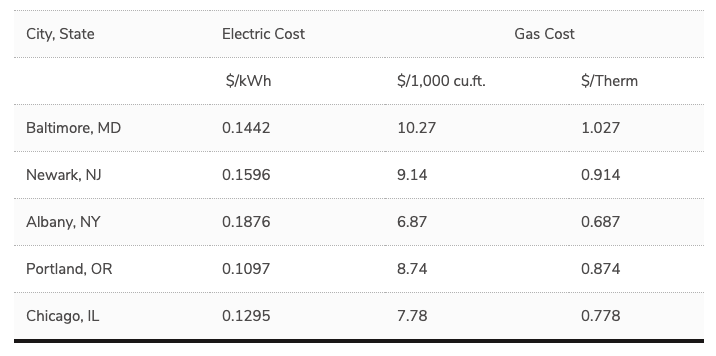
Four levels of demand charges were compared; $0 / kW, $5 / kW, $15 / kW, and $25 / kW. Note that an NREL survey of demand charges found that amongst the top ten states with the highest demand charges, the following four were northern states:
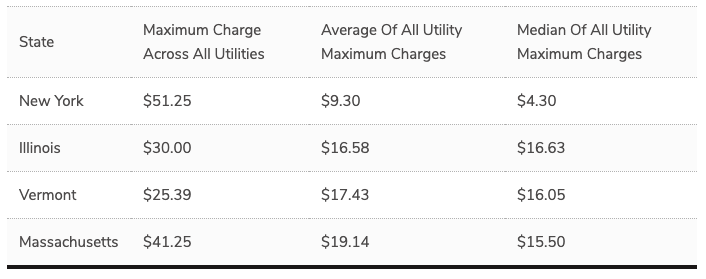
Energy Modeling – The Oak Ridge National Labs CoolCalcPeak calculator was used to compare energy costs for each Case relative to the design R-30 value. The building air-conditioning coefficient of performance was set as 2.5 and the natural gas heating efficiency was set as 0.8. Both are high-efficiency values and would be more typical of today's heating and air-conditioning systems installed in new construction.
Results:
As shown in the chart below, when using electric heat and converting to reflective roof membranes, savings resulting from the use of a reflective roof membrane versus an absorptive membrane were a function of the demand charge.
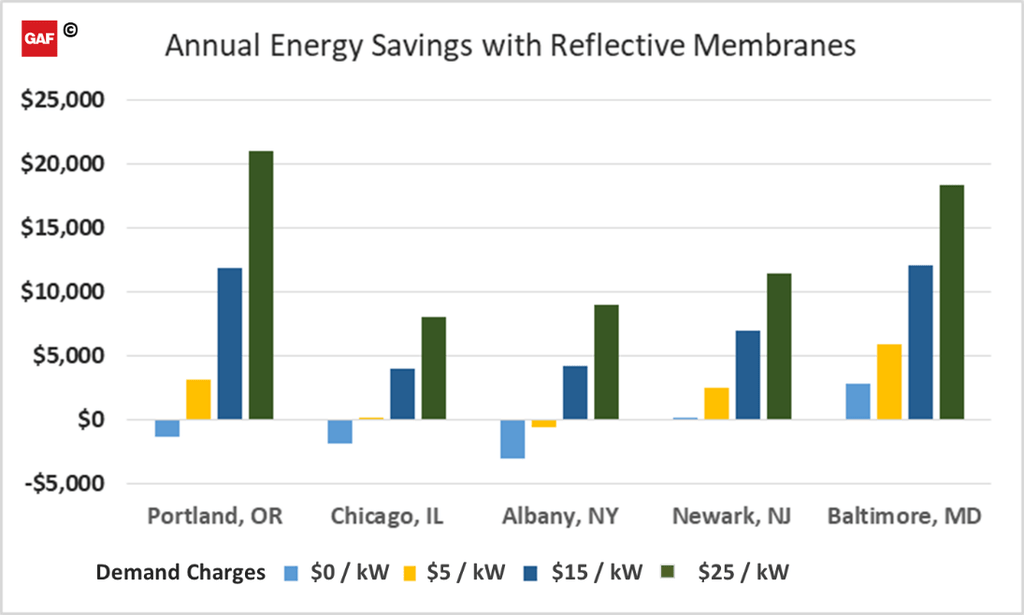
The building placed in either Newark or Baltimore would have energy savings regardless of the size of the demand charge. However, for Chicago or Albany, demand charges of $5 / kW and less showed added costs, and for Portland, a cost was incurred when the demand charge was set as $0 / kW. Looking more closely at the savings for these three cities as a function of demand charge shows the following:
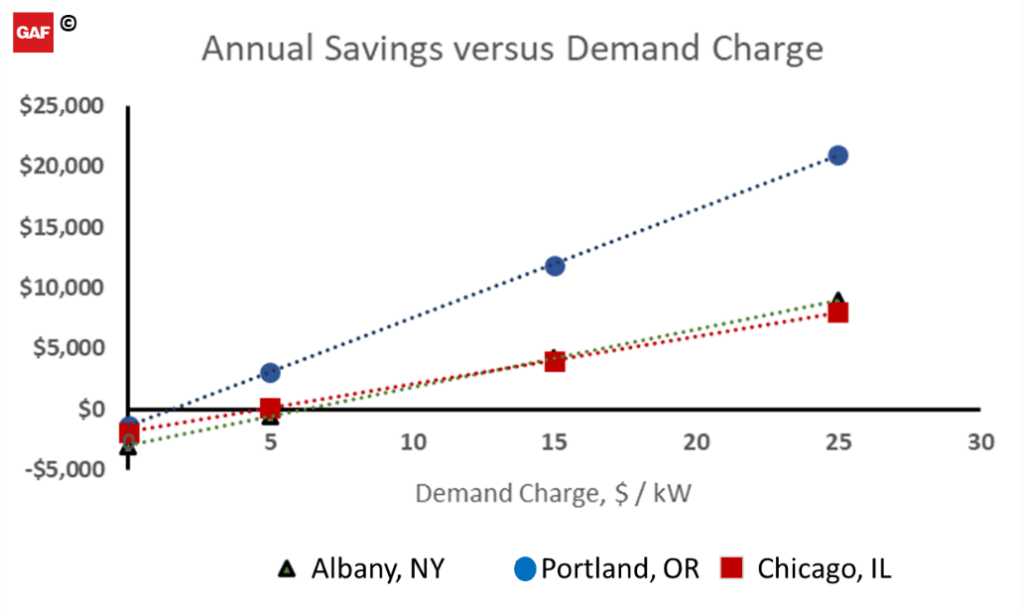
The minimum demand charge above which savings will occur was calculated to be $6.28 / kW for Albany, $4.70 / kW for Chicago, and $1.53 / kW for Portland.
Conclusions
This case study clearly debunks the myth that absortive roofs such as EPDM will be energy efficient when using electric heat. It is only when demand charges are either zero or below around $5 / kW that there might be a slight benefit to dark roofs in northern cities such as Chicago. As demand charges increase, so does the case for always specifying a reflective roof membrane such as TPO or PVC.
A Discussion of Demand Charges and Electric Heat
Demand charges base a portion of a commercial customer's electricity bill on their peak level of demand. They are typically based on the highest average electricity usage occurring within a defined time interval (usually 15 minutes) during a billing period. Unlike electricity consumption charges, which account for the volume (kilowatt hours, kWh) of electricity consumed throughout a billing period, demand charges track the highest rate (kilowatt, kW) of electricity consumption during the billing period for the defined time interval. NREL's survey of demand charges showed the following maximum demand charges depending on utility territory:
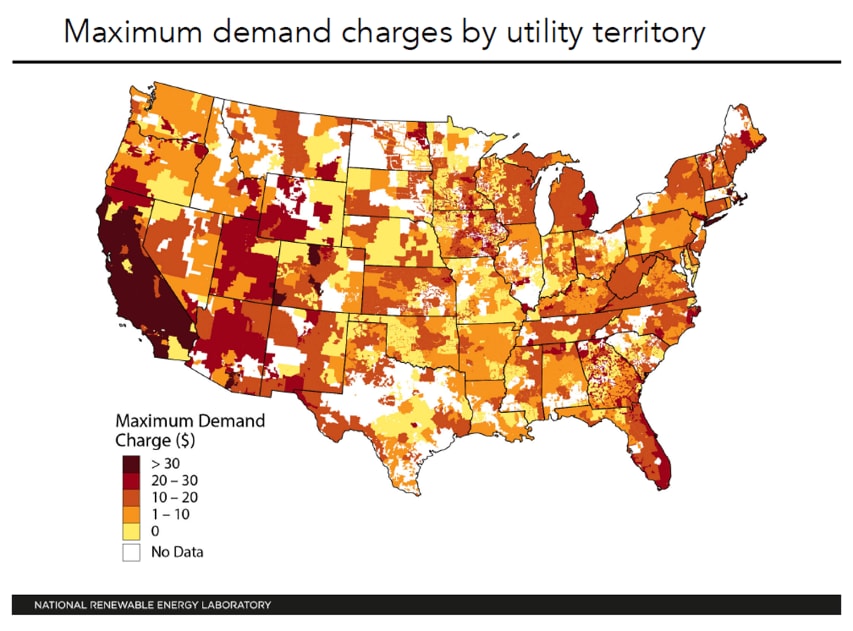
While such charges clearly impact air conditioning, for those who assumed electric heat when modeling building energy efficiency it is important to understand how frequently that might be the case. There isn't data available to show the prevalence of electric heating in commercial buildings. However, it is likely to be related to the availability of natural gas supply, and therefore it might mirror the use of electric heat in residential construction. The Energy Information Administration has published the following survey of heating energy source for major US regions:
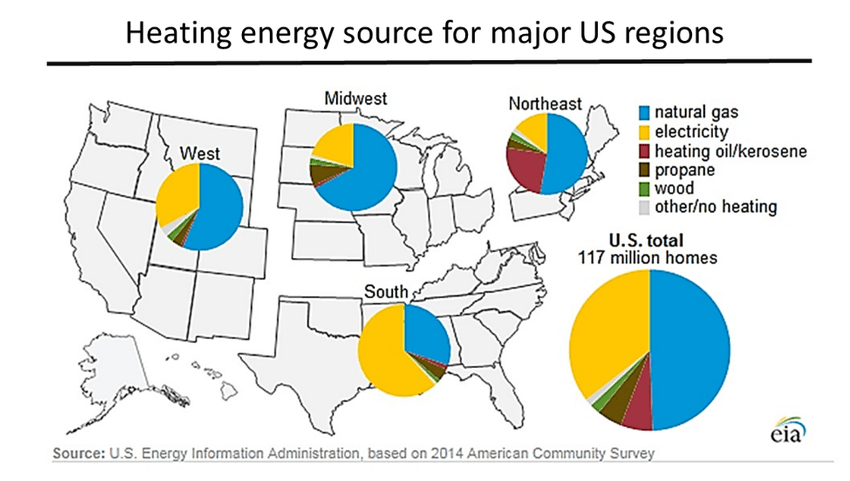
- This suggests that those who claim that reflective membranes can be energy efficient in the north are overlooking two key factors:
- Modeling based on gas heat has clearly shown reflective roofs to be energy efficient throughout the US, even as far north as Minneapolis.
When using electric heat, absorptive or dark membranes are only energy efficient in the north when demand charges are very low. But, electric heat has limited use in the north and is more typical of buildings in the south where air conditioning costs dominate.
Will a Cool Roof Always Result in Actual Cost Savings?
There are a few reasons why some may not receive lower electric bills after converting to cool roofs. For example, overall electric costs may rise year over year or the utility rate structure could change. Also, changes beyond the roof system, such as in the building's use, mechanical equipment, or operating patterns could increase overall building's energy consumption. Suffice to say, modeling shows that cool roofs reduce the impact of solar energy on a building and several case studies have demonstrated reduced utility bills. But, each building is unique and should be evaluated on its own terms.
Want to know more? The study shown here is based on a larger article published in Buildings which was peer reviewed by independent experts.
